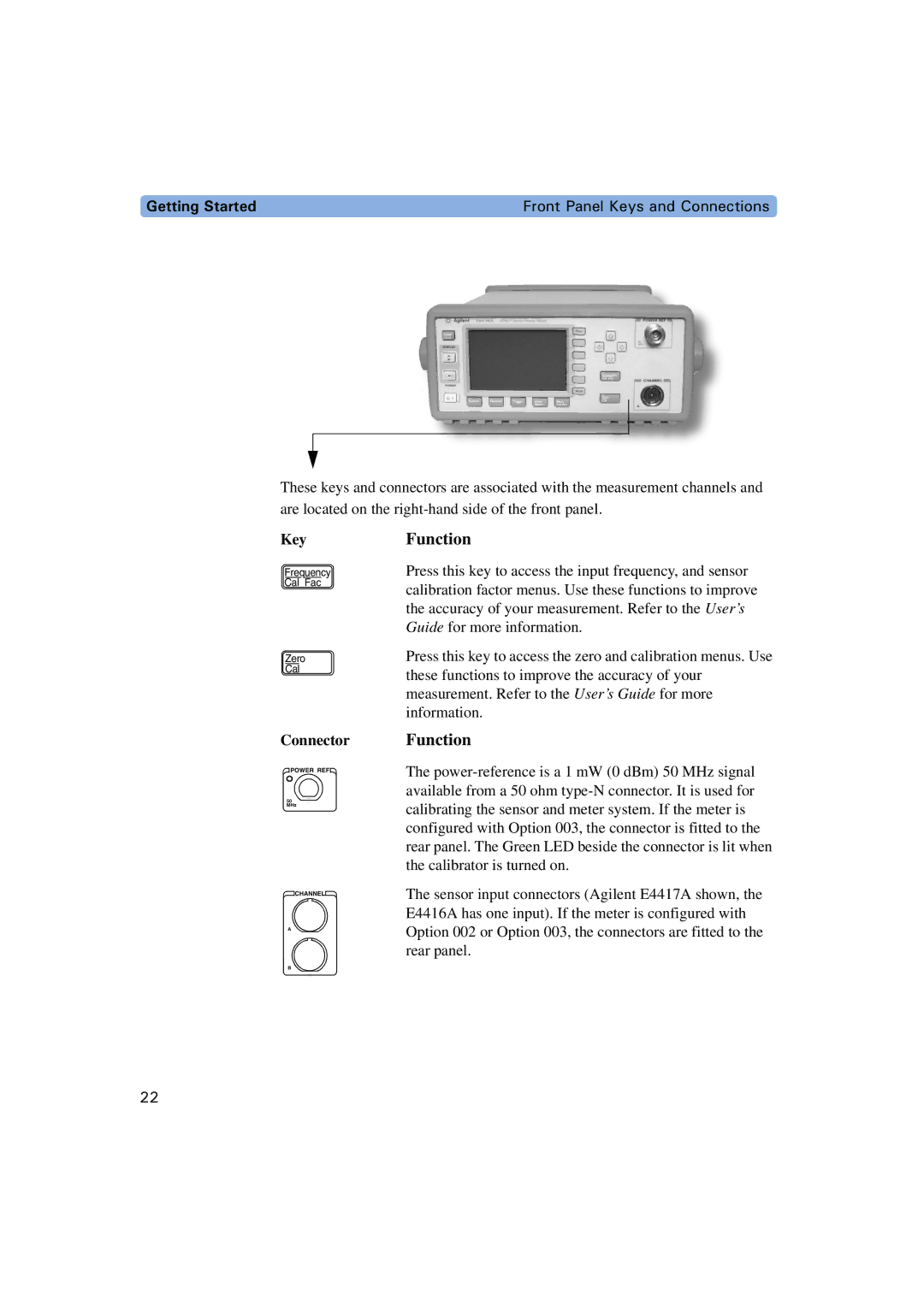E4417A, E4416A specifications
Agilent Technologies, a renowned leader in measurement and test equipment, offers a range of power meters, including the E4416A and E4417A models, which are popular for their precision and reliability in field and laboratory settings. These power meters are designed to facilitate accurate power measurements, particularly in the RF and microwave frequency ranges, making them indispensable tools in telecommunications, broadcasting, and various research applications.The Agilent E4416A is a versatile power meter that can handle average power measurements across a wide frequency range from 10 MHz to 18 GHz. It boasts a measurement accuracy of ±0.5% of reading, ensuring that users receive precise data critical for their testing and development processes. Its large graphical display and intuitive user interface simplify operation and data interpretation, enabling users to quickly obtain and analyze their measurements.
Another standout model, the E4417A, elevates measurement capabilities further with enhanced specifications for high-frequency applications. It supports frequencies up to 30 GHz, making it suitable for modern communication systems demanding higher bandwidth and speed. The E4417A can also measure both average and peak power, providing versatility for a range of signal types, including CW, pulsed, and modulated signals. This feature proves beneficial in applications such as radar testing, wireless communications, and electronic warfighting systems.
Both models utilize Agilent's advanced thermocouple sensor technology, which allows for rapid and reliable power measurements. The sensors are designed to maintain accuracy over time, reducing the need for frequent calibrations. This technology, combined with their rugged design, makes the E4416A and E4417A power meters ideal for both laboratory and field testing scenarios.
Another key feature is the built-in memory functionality that enables users to store and recall measurement results, streamlining workflow and increasing efficiency in data management. Furthermore, these instruments come equipped with remote interface capabilities that support various connectivity options such as USB, GPIB, and LAN, allowing for easy integration into automated test systems.
In summary, the Agilent E4416A and E4417A power meters are distinguished by their exceptional performance, accuracy, and versatility. Their advanced measurement capabilities and user-friendly features make them necessary tools for engineers and researchers working in fields that require precise power measurements, underpinning the efficacy of their operations and innovations.

